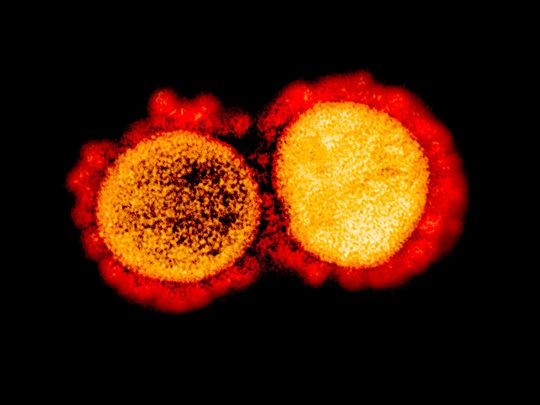
No doubt you have read the recent headlines about patients who recovered from COVID-19 only to be infected with SARS-CoV-2 again later — purportedly by a different “strain” of the virus.
In late August came news alerts about the world’s first “documented” or “confirmed” case of reinfection with SARS-CoV-2: a man from Hong Kong, diagnosed in March, had contracted “a new virus” circulating in Western Europe this summer. The very next day, news broke that two people in Europe also appeared to have been reinfected.
SEE ALSO
After that, it was stories about the first American case of the kind — involving a patient in Nevada said to have suffered worse symptoms the second time around. The preprint study (not peer-reviewed) on which those reports were based seems to no longer be available.
All this talk about new, perhaps more virulent, forms of SARS-CoV-2 is unnecessarily sparking fear and sowing confusion.
The evidence and the science
For one thing, isolated cases of reinfection also happen with other viruses. That fact is not necessarily alarming. Reinfection usually tells us something only about how the human immune system works. It is not, on the face of it, evidence that a virus has mutated in ways that make it more dangerous.
For another thing, viruses routinely mutate — and most of these changes are bad for the virus or even fatal, according to some studies. (A minority of mutations are neutral, and only a tiny minority beneficial.) The word “mutation” may sound ominous, but it is a humdrum fact of viral life and its implications most often aren’t nefarious for humans.
And yes, SARS-CoV-2 is mutating, too. So what?
The real question is this: Has it become more virulent or more infectious than it was when it was first detected in Wuhan, central China, in December? The evidence suggests that it has not.
The coronavirus’s sluggish pace of mutation is good news for us: A virus that evolved more rapidly would have a greater chance of outrunning any vaccines or drugs developed to counter it.
Like the viruses that give us influenza or measles, SARS-CoV-2 has a genetic code made up of RNA, or ribonucleic acid. But RNA is highly mutable, and since SARS-CoV-2 infects us by using our body’s cells to replicate itself again and again, every time its genome is copied, an error might creep in.
Most mutations are quickly lost, either by chance or because they damage some part of the virus’s main functions. Only a small proportion end up spreading widely or lasting. Mutation may be the fuel of evolution but, especially for an RNA virus, it also is just business as usual.
RNA viruses tend to evolve rapidly — about a million times faster than human genes. Yet if SARS-CoV-2 stands out among them, it is for evolving more slowly than many: about five times less rapidly than the influenza viruses, for example.
SARS-CoV-2 is in the slow lane of evolution
According to Nextstrain, an open-source project that tracks the evolution of pathogens in real time, and other sources, SARS-CoV-2 is accumulating an average of about two mutations per month — which means that the forms of the virus circulating today are only about 15 mutations or so different from the first version traced to the outbreak in Wuhan.
This is a tiny number considering that the SARS-CoV-2’s genome is about 30,000 nucleotides long. And it means, too, that the versions of the virus today are roughly 99.95 per cent the same as the Wuhan original. For an RNA virus, SARS-CoV-2 is in the slow lane of evolution.
(So talk about SARS-CoV-2 having developed into however many different “strains” is misleading. Scientists tend to reserve the word for versions of a virus that differ in major biological ways. SARS-CoV-2’s different forms are very similar; better to call them “variants.”)
The coronavirus’s sluggish pace of mutation is good news for us: A virus that evolved more rapidly would have a greater chance of outrunning any vaccines or drugs developed to counter it.
That said, have even the small mutations so far changed SARS-CoV-2 in any important ways?
For example, has it become more deadly?
To my knowledge, there is to date no evidence that SARS-CoV-2 has become more virulent or more lethal — nor, for that matter, that it has become less so.
For example, a recent preprint paper (not yet peer-reviewed) by Erik Volz, of the faculty of medicine at Imperial College in London, and numerous colleagues at other institutions — including members of the COVID-19 Genomics UK Consortium — which analysed 25,000 whole genome SARS-CoV-2 sequences collected in the United Kingdom, found that one particular mutation in the virus, known as D614G, had not increased mortality in patients.
The spike protein sits on the surface of the coronavirus, and it matters because it’s the part of the virus that attaches to the host’s cells. “D614G” is shorthand for a change at position 614 of the spike protein, from an aspartic acid (D) to a glycine amino acid (G). (The technical literature refers to “D614” as the earlier configuration and “G614” as the later one.)
The D614G mutation, which probably initially arose in China, first appeared to become more and more frequent in the outbreak in northern Italy in February. The G614 form of the virus has since spread all over the world and has become the dominant variant.
The D614G mutation does seem to have increased the infectivity of the coronavirus — at least in cells grown in laboratories, according to a recent paper by the computational biologist Bette Korber and others published in the journal Cell.
Apparently based partly on this and other studies, health authorities in various countries have claimed that the G614 form of the coronavirus may be 10 times more infectious than the version first detected in Wuhan.
But as some epidemiologists have warned, it is difficult, not to mention unwise, to extrapolate from lab results to explain how the virus actually spreads in a real population.
Whether SARS-CoV-2 is becoming more infectious or more deadly are important questions, all the more so because it doesn’t look like this virus will be eradicated any time soon.
I do not believe that the evolution of SARS-CoV-2 is what’s driving the virus’s continued spread. The coronavirus remains good at propagating itself because most of us still are susceptible to it; we are not immune, and it can still find new hosts to infect relatively easily.
In the same issue of Cell that published the Korber paper, the viral epidemiologist Nathan Grubaugh and colleagues argued that the “increase in the frequency of G614 could be explained by chance and the epidemiology of the pandemic.”
I agree.
In other words: The next time you compare different outbreaks and start wondering or worrying about the variations, assume first that those variations have to do with conditions on the ground, rather than anything about the virus itself, like a new mutation.
How variants affect mortality rates
Consider, for example, the wave of SARS-CoV-2 infections that has hit Australia since June. While there has been a major outbreak in the state of Victoria (peaking at around 700 cases per day), the one in the state of New South Wales has been minor so far (with a daily case count usually around 10) — yet both have been caused by the same variant of the coronavirus, the one with the D614G mutation.
The precise reasons for these differences are still being investigated, but one may be, simply, that because the outbreak hit Victoria first, the health authorities of New South Wales had more time to prepare.
Mortality rates, too, differ between locations, and in some places the virus may appear to kill more people. But again, these variations probably say less about the virus than about differences in how the disease is being treated, or where the virus has spread mostly among vulnerable populations, like people in nursing homes.
What’s more, even if the D614G mutation does increase the virus’s infectivity in humans, that fact probably doesn’t have any major implications for our prospects of developing an effective vaccine. The mutation does affect the spike protein, but not the part of it that the neutralising antibodies of the human immune system target when the body defends itself against infection.
read more
- COVID-19: Hoaxes are making doctors’ jobs harder
- COVID-19 side-effect: We’re all socially awkward now
- COVID-19: Is the lockdown making you depressed, or are you just bored?
- COVID-19: Meet the philosopher who is trying to explain the coronavirus pandemic
- COVID-19: Here is how plane cabins could change dramatically
Viruses mutate constantly; SARS-CoV-2 is no different. And it’s essential that we continue to monitor when and how, and with what effects, it is evolving.
Whether SARS-CoV-2 is becoming more infectious or more deadly are important questions, all the more so because it doesn’t look like this virus will be eradicated any time soon. More likely, it will become a pathogen endemic in humans, as everyday as influenza.
For now, though, SARS-CoV-2 essentially is the same virus that emerged in December. Sure, it has mutated, but not, so far, in ways that should change how scientists think about how to tackle it — and not in ways that should worry you.
— Edward Holmes is an evolutionary virologist at the University of Sydney, Australia







